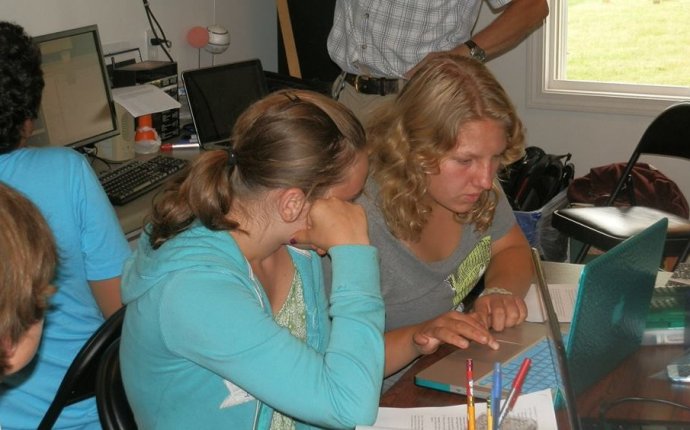
Astronomy Camps for high school students
Alfred University Observatory. Photo by Allen Grove
Rising sophomores, juniors and seniors interested in pursuing a future in astronomy can explore their passion at this residential camp hosted by Alfred University’s Stull Observatory, considered one of the top teaching observatories in the country. Instructed by AU physics and astronomy faculty members, students participate in daytime and nighttime activities using the observatory’s extensive collection of telescopes and electronic detection equipment, learning about a wide range of topics from variable star photometry to CCD imaging to black holes and special relativity. Evenings and free time are filled with exploring the village of Alfred, movie nights and other group activities, and visits to the nearby Foster Lake.
Arizona State Palm Walk. Photo Credit: Cecilia BeachThe longest-running science camp in the state of Arizona, Astronomy Camp encourages high school students to expand their horizons and develop a cosmic perspective on the earth. The Beginning Astronomy Camp, for students aged 12-15, explores the basics of astronomy as well as other topics in science and engineering through hands-on projects such as measuring solar activity and hiking a scale model of the solar system. Students in the Advanced Astronomy Camp (ages 14-19) develop and present research projects on topics such as astronomical photography, spectroscopy, CCD imaging, spectral classification, and asteroid orbit determination. Both camps take place at the Kitt Peak National Observatory, with day trips to the University of Arizona, Mt. Graham Observatory, and other nearby astronomy research facilities.
University of Michigan Campus. jeffwilcox / FlickrAmong the courses offered by the University of Michigan’s Michigan Math and Science Scholars pre-college program are two basic astronomy classes taught by university faculty. Mapping the Mysteries of the Universe introduces students to the theoretical techniques and observational methods used to create maps and models of the Universe and physics principles such as dark energy and dark matter. Climbing the Distance Ladder to the Big Bang: How Astronomers Survey the Universe is an in-depth examination of the “distance ladder, ” a tool created by astronomers to measure the distance to celestial objects using techniques such as radar ranging and triangulation. Both courses are two-week sessions in small classroom and laboratory settings, giving students personalized attention and opportunities for hands-on experiential learning.
Headquarter for the Very Large Array are on the New Mexico Tech campus. Hajor / Wikimedia CommonsThe Summer Science Program offers academically gifted high school students the opportunity to participate in a real-world research project to determine the orbit of a near-earth asteroid from direct astronomical observations. Students learn to apply college-level physics, astronomy, calculus and programming skills to calculate celestial coordinates, take digital images and locate objects on these images, and write software that measures the positions and movements of asteroids and then converts those positions into the size, shape, and orbit of the asteroid around the Sun. At the end of the session, their findings are submitted to the Minor Planet Center at the Harvard-Smithsonian Center for Astrophysics. SSP is offered at two campuses, the New Mexico Institute of Technology in Socorro, NM and Westmont College in Santa Barbara, CA.











